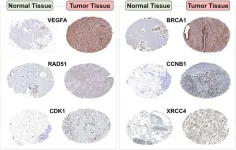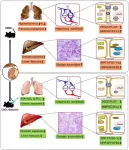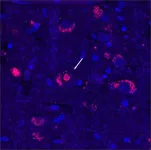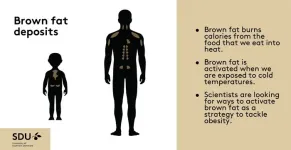(Press-News.org) NEW YORK, April 29, 2024 – The Human Immunome Project (HIP), a global nonprofit scientific initiative, released its Scientific Plan today, on World Immunology Day, the organization announced. The plan provides a detailed roadmap of how the Human Immunome Project and its network of global study sites will generate the world’s largest and most diverse immunological dataset and use these data to power publicly available AI models of the immune system.
“The immune system is the epicenter of human health, and our newly released Scientific Plan outlines an actionable, global strategy for how we can unlock the secrets of the immune system and harness its power to improve health for all,” said Dr. Hans Keirstead, CEO of the Human Immunome Project.
The human immune system is one of the most complex systems in the world—and one of its most important. It determines whether we survive infancy, which diseases we get, how we age, and how long we’ll live. Understanding our immune system is the key to fighting disease and improving health for all. Yet its complexity has limited our ability to tap into its potential—until now.
Recent advances in immune monitoring and AI provide the tools to generate and rapidly process the trillions of datapoints required to model the immune system for the first time, to understand how it varies across individuals, and to develop targeted approaches to elongating healthspans and combatting disease.
Despite these tremendous advances, our understanding of the immune system remains limited: less than one percent of the immunological data necessary to understand immune function and diversity on a global scale are available. As such, HIP’s first mission is generating diverse immunological datasets at scale.
To generate these data, HIP is establishing a network of global study sites that reflect the diversity of humanity (across age, ethnicity, geography, sex, and socioeconomic status) and immune responses. Data will be generated through a phased approach and enabled by HIP-engineered Immune Monitoring Kits—a collection of assays and operating procedures that facilitate rapid, robust, and standardized data collection worldwide.
This collaborative, global effort will produce longitudinal, baseline datasets that enable scientists to assess developmental and age-dependent changes and computationally stitch together the health trajectory of different population groups worldwide. For more details on the global study protocol, review the summary.
With the Scientific Plan now fully articulated, the Human Immunome Project is working to establish its initial Pilot Sites—up to 10 state-of-the-art sites that will collect data, help refine the site model, and prepare HIP for scale. These sites will be spread globally with a focus on the Global South and sub-Saharan Africa, specifically.
As data collection progresses, HIP will begin to develop AI models—first predictive, then mechanistic—that will deepen our understanding of immune responses and individual and population-based health trajectories. These models will provide a holistic view of the immune system and empower scientists with a new, transformative tool to advance drug development, strengthen personalized medicine, and increase healthspans. These data and models will additionally produce new insights relevant to nearly all health conditions, including key global health challenges related to maternal health, aging and cognitive decline, and disease evolution.
An initial draft of HIP’s Scientific Plan was shared with a group of global experts at the “Human Immunome Project Into Action Conference,” hosted at CosmoCaixa Museum of Science by the CaixaResearch Institute and HIP in November 2023. The conference provided participants an opportunity to input into the Scientific Plan and concluded with an endorsement of the mission and vision of the Human Immunome Project.
Since November, HIP’s science team, led by Dr. John Tsang, Dr. Shai Shen-Orr, and Dr. Orit Lavi, have refined the plan using feedback gathered at the conference. The result is a detailed strategy to decode and model the immune system with the ultimate goal of improving health for all.
“The Human Immunome Project is at the cutting-edge of scientific discovery and is uniquely positioned to provide the scientific and medical communities with the knowledge and tools to innovate new diagnostics, drugs, vaccines, and immunotherapies that can address disease, elongate healthspans, and enable more personalized and more effective healthcare for all. I could not be prouder to lead this global effort,” said Dr. Keirstead.
***
ABOUT THE HUMAN IMMUNOME PROJECT
The Human Immunome Project (HIP) generates diverse immunological datasets at scale and builds publicly available AI models of the immune system to accelerate medical research and drug discovery, improve health, and decrease healthcare costs worldwide. HIP operates globally and is a registered nonprofit organization.
NOTE TO EDITORS
HIP leadership is available for interviews and a full version of the Scientific Plan is available upon request.
CONTACT
Liza Kane-Hartnett
Communications Director
Liza@ImmunomeProject.org
END
Highlights:
The American Heart Association awarded four new scientific research grants to evaluate the role of race in measuring heart disease risk.
The funded studies are focused on multi-ethnic groups and studying how race, considered a social rather than biological construct, affects health risk prediction when it is incorporated as a variable in algorithms.
This research is funded by a grant from the Doris Duke Foundation to study the complex issue of how race and ethnicity, when factored into cardiovascular clinical care algorithms ...
Background and objectives
Breast cancer remains a significant global health concern, warranting further exploration into its genetic basis and potential therapeutic targets. This study aimed to elucidate the genetic associations of seven pivotal genes with breast cancer and discern their potential role in disease prognosis.
Methods
The genes VEGFA, BRCA1, RAD51, CCNB1, CHEK1, CDK1, and XRCC4 were curated from over 30 articles. Their association with breast cancer was analyzed using both in silico and in vitro techniques. The in silico assessment ...
Background and Aims
Hepatopulmonary syndrome (HPS) is characterized by arterial oxygenation defects due to pulmonary vascular dilation in liver disease. To date, liver transplantation remains the only effective treatment for HPS. This study aimed to explore the preventative role of baicalein in HPS development.
Methods
Sixty male rats were randomly assigned to three groups: sham, common bile duct ligation (CBDL), and baicalein, receiving intraperitoneal injections of baicalein (40 mg·kg−1·d−1, diluted in saline) for 21 days. Survival rate, liver and kidney function, and bile acid metabolism levels were evaluated. Liver and lung angiogenesis ...
Background and objectives
Honey is a viscous, hygroscopic liquid in nature. It has the ability to treat wounds, wrinkles, aging, and inflammation. This study’s objective was to create and characterize a nanoemulsion containing honey and evaluate its stability.
Methods
A pseudo-ternary phase diagram was retraced with several concentrations of the Smix, water, and liquid paraffin oil to formulate nanoemulsions containing honey. From the results of pre-formulation stability studies, formulation HNE-19, with a hydrophilic lipophilic balance ...
As embryos, all complex organisms are partially made up of pluripotent stem cells, a term for cells that have the capacity to differentiate into any kind of cell: nerve cells, muscle cells, blood cells, skin cells, and the like. As the ultimate biological “shape-shifters,” these cells are proving key to regenerative medicine, drug development, genetic research, and related fields.
Within a pluripotent stem cell, certain genes get activated and express information that ultimately decides a cell’s fate. The first step in this expression process is called transcription, a process that turns out to be incredibly complex, in part ...
Hyperspectral imaging (HSI) is a state-of-the-art technique that captures and processes information across a given electromagnetic spectrum. Unlike traditional imaging techniques that capture light intensity at specific wavelengths, HSI collects a full spectrum at each pixel in an image. This rich spectral data enables the distinction between different materials and substances based on their unique spectral signatures. Near-infrared hyperspectral imaging (NIR-HSI) has attracted significant attention in the food and industrial fields ...
**EMBARGOED BY NATURE GENETICS UNTIL 10AM BST/ 5AM ET/ 3AM MT, APRIL 29**
Some families call it a trial of faith. Others just call it a curse. The progressive neurological disease known as spinocerebellar ataxia 4 (SCA4) is a rare condition, but its effects on patients and their families can be severe. For most people, the first sign is difficulty walking and balancing, which gets worse as time progresses. The symptoms usually start in a person’s forties or fifties but can begin as early as the late teens. There is ...
Samples reveal evidence of changes experienced by the surface of asteroid Ryugu, some probably due to micrometeoroid bombardment.
Analyzing samples retrieved from the asteroid Ryugu by the Japanese Space Agency’s Hayabusa2 spacecraft has revealed new insights into the magnetic and physical bombardment environment of interplanetary space. The results of the study, carried out by Professor Yuki Kimura at Hokkaido University and co-workers at 13 other institutions in Japan, are published in the journal Nature Communications.
The investigations used electron waves penetrating ...
Dinosaurs were as smart as reptiles but not as intelligent as monkeys, as former research suggests.
An international team of palaeontologists, behavioural scientists and neurologists have re-examined brain size and structure in dinosaurs and concluded they behaved more like crocodiles and lizards.
In a study published last year, it was claimed that dinosaurs like T. rex had an exceptionally high number of neurons and were substantially more intelligent than assumed. It was claimed that these high neuron counts could directly inform on ...
Brown fat, also known as brown adipose tissue (BAT), is a type of fat in our bodies that's different from the white fat around our belly and thighs that we are more familiar with. Brown fat has a special job—it helps to burn calories from the foods that we eat into heat, which can be helpful, especially when we're exposed to cold temperatures like during winter swimming or cryotherapy. For a long time, scientists thought that only small animals like mice and newborns had brown fat. But new research shows that a certain number of adults maintain their brown fat throughout life. Because brown fat is so good at burning calories, scientists ...







